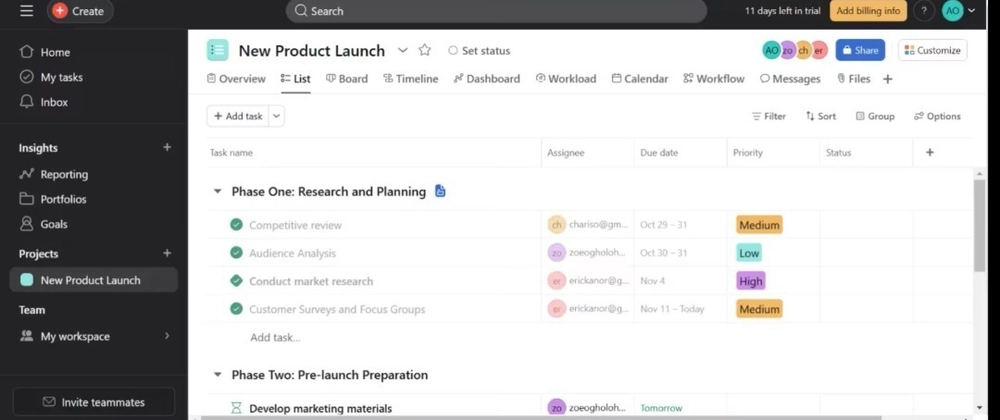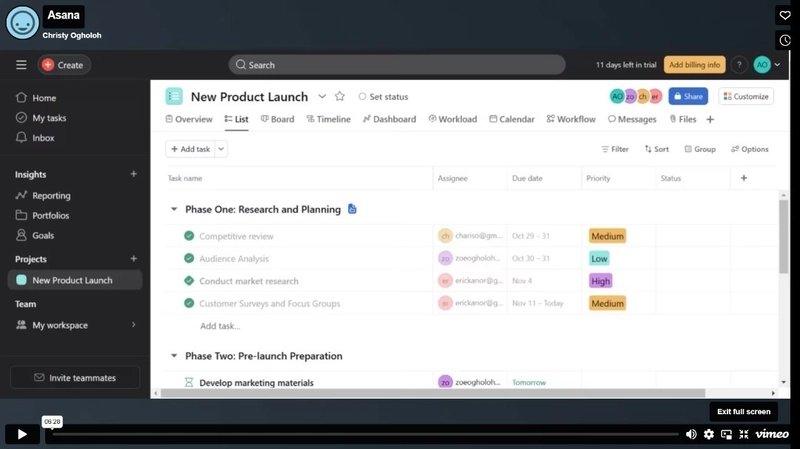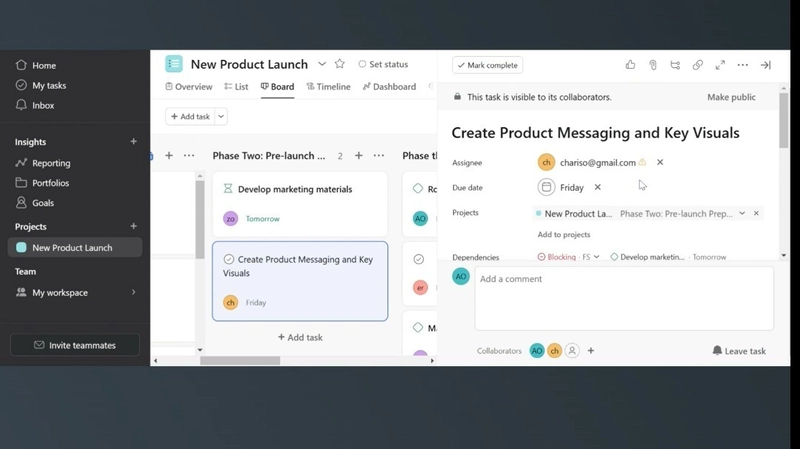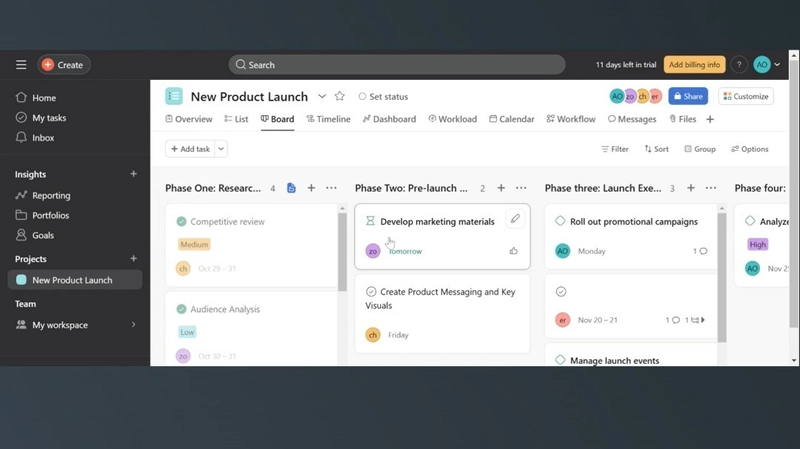Introduction
Launching a new product involves multiple teams, deadlines, and tasks that need seamless coordination.
To manage this efficiently, I used Asana, a powerful project management tool that helped streamline workflows and improve collaboration. In this post, I’ll share how I structured the project, assigned tasks, tracked progress, and leveraged Asana’s features to stay organized.
Project Setup in Asana
To keep things structured, I divided the project into phases, ensuring each stage had clearly defined tasks, assignees, and deadlines. The List View in Asana was instrumental in organizing everything.
Phases of the Project:
Phase One:
Research and Planning
Competitive review
Audience analysis
Conducting market research
Customer surveys and focus groups
Phase Two: Pre-launch Preparation
Developing marketing materials
Outreach and PR efforts
Product testing and final adjustments
Each task was assigned to specific team members with due dates and priority levels (Low, Medium, High) to ensure clear expectations and timely execution.
Task Management & Workflow
Organizing Tasks Efficiently
Used subtasks for breaking down complex tasks.
Assigned responsibilities with due dates and priority levels.
Added task dependencies to ensure logical progress.
Collaboration and Communication
Team members used comments to share updates.
Uploaded relevant documents and links directly within tasks.
Used the @mention feature to keep stakeholders in the loop.
Monitoring Progress & Insights
Tracking Progress in Asana
Used filters, sorting, and grouping to organize tasks by priority and due date.
The Dashboard and Workload Views provided insights into team performance and workload distribution.
The Calendar View helped visualize important deadlines and milestones.
Challenges & Solutions
Challenge: Some team members were unfamiliar with Asana.
Solution: Conducted a short training session and provided documentation.
Challenge: Keeping track of too many updates.
Solution: Used status updates and summary reports instead of frequent check-ins.
Key Takeaways & Lessons Learned
Asana streamlined task management, reducing miscommunication and missed deadlines.
Prioritization and task dependencies helped ensure smoother execution.
Regular progress tracking through dashboards improved accountability.
Effective collaboration features like comments, file attachments, and tagging kept communication centralized.
Conclusion
Managing a new product launch requires careful planning and execution. Using Asana, I was able to simplify workflows, improve team collaboration, and ensure on-time delivery. Whether you’re leading a product launch or handling any complex project, Asana can be a game-changer!
Have you used Asana for project management? Share your experience in the comments!






Top comments (0)